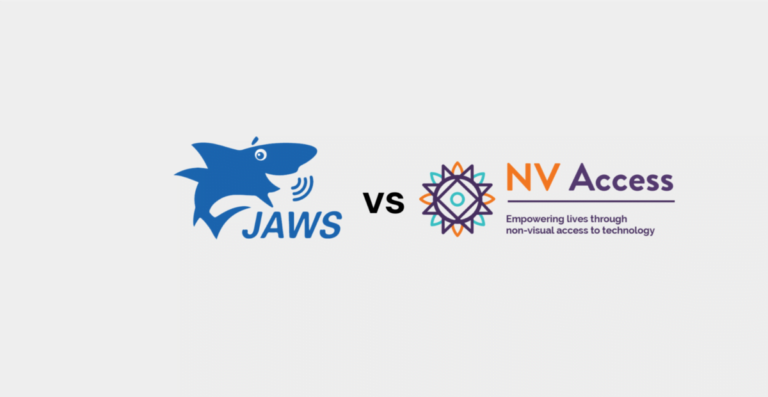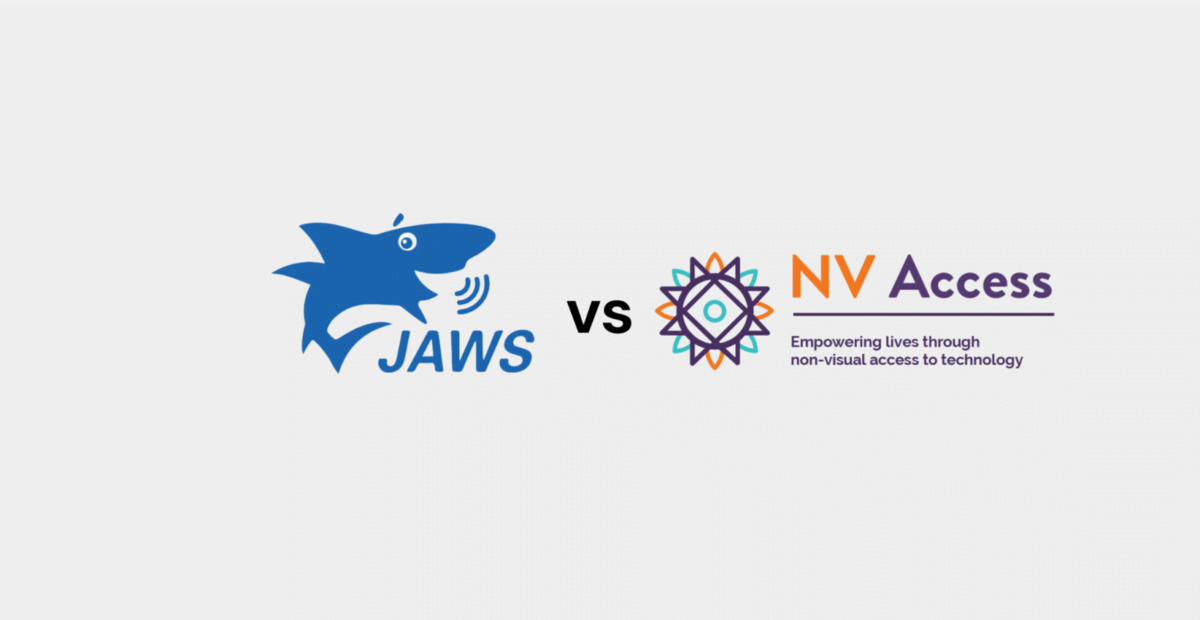If you rely on a screen reader to access digital content, choosing the right one is critical. The two most popular options are JAWS (Job Access With Speech) and NVDA (NonVisual Desktop Access). In this article, we will compare these leading screen readers based on price, functionality, ease of use, compatibility, and other factors to help you determine which one works best for you.
Screen readers play a crucial role in enhancing the daily productivity of individuals with disabilities. They empower users with varying degrees of vision loss to interact with technology, offering them increased independence, productivity, and accessibility. People with other disabilities, such as cognitive or physical impairments, may also benefit from screen reader functionalities, depending on their specific needs.
JAWS (Job Access With Speech) and NVDA (NonVisual Desktop Access) are the most popular choices among screen reader users, according to the results of a 2021 WebAIM survey. In this article, we’ll compare the fundamental workings of both screen readers to help users select the most suitable option for their accessibility requirements.
JAWS vs NVDA

When considering which screen reader to choose, you must take several factors into account. Understanding the differences between JAWS and NVDA in these key areas can help you make an informed decision:
Price
JAWS is a paid software with options for single-use or 90-day timed licenses. Single-use licenses range from $90 to $1475 per year, while the 90-day timed license costs $290. In contrast, NVDA is a free open-source software available for download without charge.
For users on a tight budget, NVDA is the ideal choice since it is completely free. However, if you require professional support and training, JAWS can be a good option. It is important to consider your budget and cost factors when making a decision, especially for long-term usage.
Accessibility Audits
Professionals in the accessibility field widely prefer using JAWS to conduct an accessibility audit. A key feature that distinguishes it from NVDA is its “Browse Mode,” which allows it to take control of the entire browsing experience. In practical terms, JAWS can add words to convey meaning, even if those words are not explicitly found in the Document Object Model (DOM) tree.
In comparison, NVDA solely relies on the code within the accessibility or DOM tree to interact with websites. This flexibility and contextual understanding give JAWS an advantage over NVDA when performing accessibility audits.
💡Learn: How To Optimize Screen Readers’ Accessibility On Your Website
Functionality
JAWS offers extensive customization options, such as braille support, magnification choices, and keyboard shortcuts. It comes with built-in support for Microsoft Office and Google Docs, along with voices available in over 30 languages. It utilizes scripts to enhance the accessibility of third-party applications and can connect to external braille devices via USB.
NVDA, built on Python and being open-source, offers robust support for a wide range of software applications and programming languages. Its speech synthesizer supports over 50 languages and can also work with third-party speech synthesizers. Like JAWS, It supports refreshable braille displays and keyboards via USB.
NVDA also offers a thriving community of NVDA plugins and scripts which enhances its features. These add-ons also offer tailored support for different applications, such as Notepad++ and Zoom.
Ease of Use
While both JAWS and NVDA are designed to be user-friendly, users might have different preferences. Some users argue that JAWS is a bit harder to learn. But it is worth noting that it provides excellent documentation to support users in the learning process. However, you have to pay for JAWS updates.
NVDA, being a free and regularly updated open-source software, may be more appealing to users require a screen reader for their regular browsing activities. You would need to explore the documentation and support available for both screenreaders to make an informed decision.
Compatibility with Operating Systems and Browsers
Both JAWS and NVDA are compatible with Windows operating systems. In terms of browsers, JAWS works best with Google Chrome and Microsoft Edge, while NVDA is optimized for Chrome and Firefox. Always consider your preferred browser and operating system to ensure seamless integration.
Community Support
The availability of an active support community can significantly enhance the user experience. NVDA benefits from an engaged community, providing prompt responses, troubleshooting assistance, and valuable resources. While JAWS also has a supportive community, the open-source nature of NVDA tends to foster greater collaboration for continuous improvement.
Recommendations
It is evident that the choice between JAWS and NVDA ultimately depends on individual needs and preferences. While both screenreaders offer valuable features and functionalities, we can make a clear recommendation based on the factors discussed above.
For users seeking a robust and highly configurable screen reader with an established presence in the industry, JAWS remains a popular choice. Its advanced customization options and braille support make it a compelling option for those requiring a highly tailored experience. Another advantage is that JAWS is widely used in both private and public sectors, making it suitable for commercial purposes.
However, if budget is a significant concern, NVDA stands out as a strong contender due to its free and open-source nature. Its compatibility with several software applications, active community support, and regular updates makes it a great alternative for many users.
Closing Thoughts
Ultimately, both JAWS and NVDA screen readers have their unique strengths and weaknesses, catering to different user requirements. It is advisable to conduct further research, consult accessibility experts, and explore additional screen reader options. This will ensure that you make the most suitable choice for a seamless and enhanced digital experience.





Could you elaborate on why jaws is better for braille? I currently have a home annual jaws subscription, and I’m not noticing much in terms of better braille support with HIMS QBraille Xl. All I noticed was that some things were displayed differently, but I couldn’t say that JAWS was massively better, but as I prefer braille to speech, and use it extensively, what am I missing that you find useful? Trying to determine if I should renew my JAWS subscription when it comes up in a few months. My previous braille display was far better with JAWS, purely because HumanWare didn’t bother assigning any commands to control the computer directly from the braille display. But since the Qbraille has an actual keyboard connection to go with the usual braille connection, I no longer have that problem. So what has jaws got that NVDA doesn’t that someone primarily using braille might want? Thanks for your thoughts.